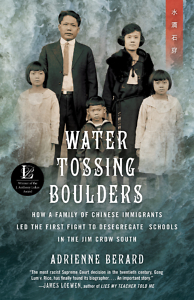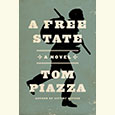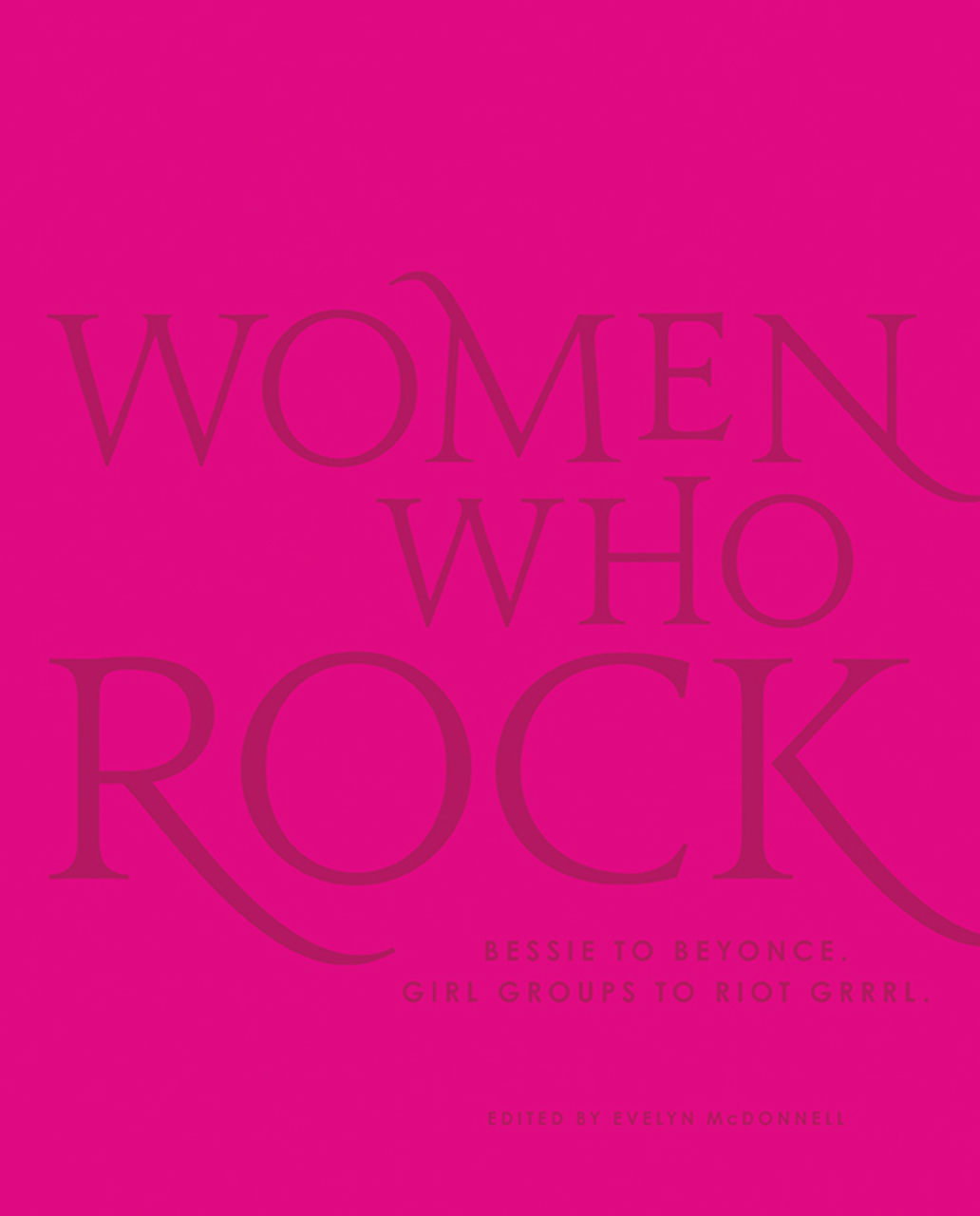In the Tense Space Between Two Worlds
Adrienne Berard’s Water Tossing Boulders looks at the American civil-rights movement through a new lens
At the 1985 convention of the American Booksellers Association, Pat Conroy claimed that his mother, “Southern to the bone,” once summarized the region’s literature in a single sentence: “On the night the hogs ate Willie, Mama died when she heard what Daddy did to Sister.”

This exaggeration may have played slyly with the qualities we glimpse in William Faulkner, Flannery O’Connor, and Ernest J. Gaines (and writers far less proficient), but it also underscores a popular notion—that the South is best represented by its novels and stories, as though its peculiarities and excesses wouldn’t be believed as reportage. That assumption raises another question: is there such a thing as a Southern nonfiction tradition?
The magnificent and anguished history of the civil-rights era has long served as a lodestar for Southern writers of nonfiction—think of the work of Memphis’s own Aram Goudsouzian, for starters—but in Water Tossing Boulders journalist Adrienne Berard gives the movement her own spin, turning back the clock to the 1920s, when a Chinese-American family pushed back against Jim Crow all the way to the Supreme Court.
In the late winter of 1904, Jeu Gong Lum crept across the frozen Detroit river from Canada to Gam Saan, or “Golden Mountain,” Cantonese slang for America. It was a risk that defied the Chinese Exclusion Act of 1882. Between that year and 1920, an estimated 17,000 Chinese nationals entered the United States illegally, most from Canada.
 Lum’s odyssey led him to the Mississippi Delta, where he courted and married Katherine, an eighteen-year-old Chinese immigrant who had embraced the customs of white Southern culture. Soon they were joined by two daughters, Berda and Martha, and a son, Biscoe, named after white neighbors near their new home of Rosedale, Mississippi, a drowsy hamlet nestled along a bend in the Mississippi River. With the threat of deportation always looming, the parents fabricated new identities, granting themselves American birthplaces and thus the rights of citizenship as guaranteed by the Fourteenth Amendment.
Lum’s odyssey led him to the Mississippi Delta, where he courted and married Katherine, an eighteen-year-old Chinese immigrant who had embraced the customs of white Southern culture. Soon they were joined by two daughters, Berda and Martha, and a son, Biscoe, named after white neighbors near their new home of Rosedale, Mississippi, a drowsy hamlet nestled along a bend in the Mississippi River. With the threat of deportation always looming, the parents fabricated new identities, granting themselves American birthplaces and thus the rights of citizenship as guaranteed by the Fourteenth Amendment.
Guided by Katherine’s drive and persistence, the family stitched themselves into Rosedale’s fabric, attending a church and enrolling all three children in the local public school:
They would learn English and speak with a Southern drawl. They would drink Coca-Cola and play baseball. They would attend school and pledge allegiance to the United States of America, reciting the words from memory the same tired way their parents recited stories from the old country. Their childhoods, unfolding in the tense space between two worlds, represented the end of one South and the beginning of another.
When white residents of Rosedale lodged a formal complaint against the children’s school enrollment, Lum decided to wage battle in the courts. His oldest child, Berda, was a flighty student prone to skipping class, so his younger daughter, the poised and scholarly Martha, became the plaintiff. Lum’s search for a lawyer might have been quixotic, but a strapped-for-cash former state governor, Earl Brewer, took on the case.
Brewer’s progressive convictions and commitment to racial equality put him in opposition to his fellow white Southerners. As governor, Berard writes, “Brewer set his sights on a complete moral reform of the state, to outlaw drinking and gambling, to raise the age of consent, to adopt labor laws that protected women and ensured collective-bargaining rights for industrial workers.”
 Brewer’s lawyerly swagger and the Lum family’s quiet, fierce courage dominate Water Tossing Boulders as Berard tracks the case through the judiciary system straight to the Supreme Court. She recreates Rosedale’s textures and tensions with the eye of an assured master, shading in her broader canvas with other American stories. The eugenics philosophy that infused research at the prestigious Cold Spring Harbor laboratory in New York, for example, left behind cultural DNA that can still be found today, from Charles Murray’s The Bell Curve to the opinions of pundit Andrew Sullivan on a bad day.
Brewer’s lawyerly swagger and the Lum family’s quiet, fierce courage dominate Water Tossing Boulders as Berard tracks the case through the judiciary system straight to the Supreme Court. She recreates Rosedale’s textures and tensions with the eye of an assured master, shading in her broader canvas with other American stories. The eugenics philosophy that infused research at the prestigious Cold Spring Harbor laboratory in New York, for example, left behind cultural DNA that can still be found today, from Charles Murray’s The Bell Curve to the opinions of pundit Andrew Sullivan on a bad day.
Berard is particularly astute on the way Martha’s Asian heritage stranded her in a legal system designed to divide whites and blacks. When the case rolled into Washington, D.C., it smashed head-on into justice Louis Brandeis, who, despite his Jewish background, was vehemently opposed to the Fourteenth Amendment, voting with the Supreme Court’s conservative bloc consistently on racial issues. His questioning undermined the Lums’ position. The Court handed down its unanimous decision in November 1927: each state had the sole, unassailable right to segregate its schools. Chief Justice (and former U.S. President) William Howard Taft cited the notorious Plessy v. Ferguson decision as legal precedent, devastating the Lum family and their supporters.
Berard’s accomplishment is broad yet detailed, rescuing from history’s dustbin a critical if futile effort to overturn Jim Crow. She meticulously delves into the larger history by hewing to the Lums’ affecting story, one that trails off into heartbreak and poverty but offers a surprisingly happy ending. If there’s a publishing niche for acclaimed Southern narrative non-fiction, then Water Tossing Boulders deftly fills it.
 Hamilton Cain is the author of This Boy’s Faith: Notes from a Southern Baptist Upbringing and a finalist for a 2006 National Magazine Award. A native of Chattanooga, he lives with his family in Brooklyn, New York.
Hamilton Cain is the author of This Boy’s Faith: Notes from a Southern Baptist Upbringing and a finalist for a 2006 National Magazine Award. A native of Chattanooga, he lives with his family in Brooklyn, New York.


